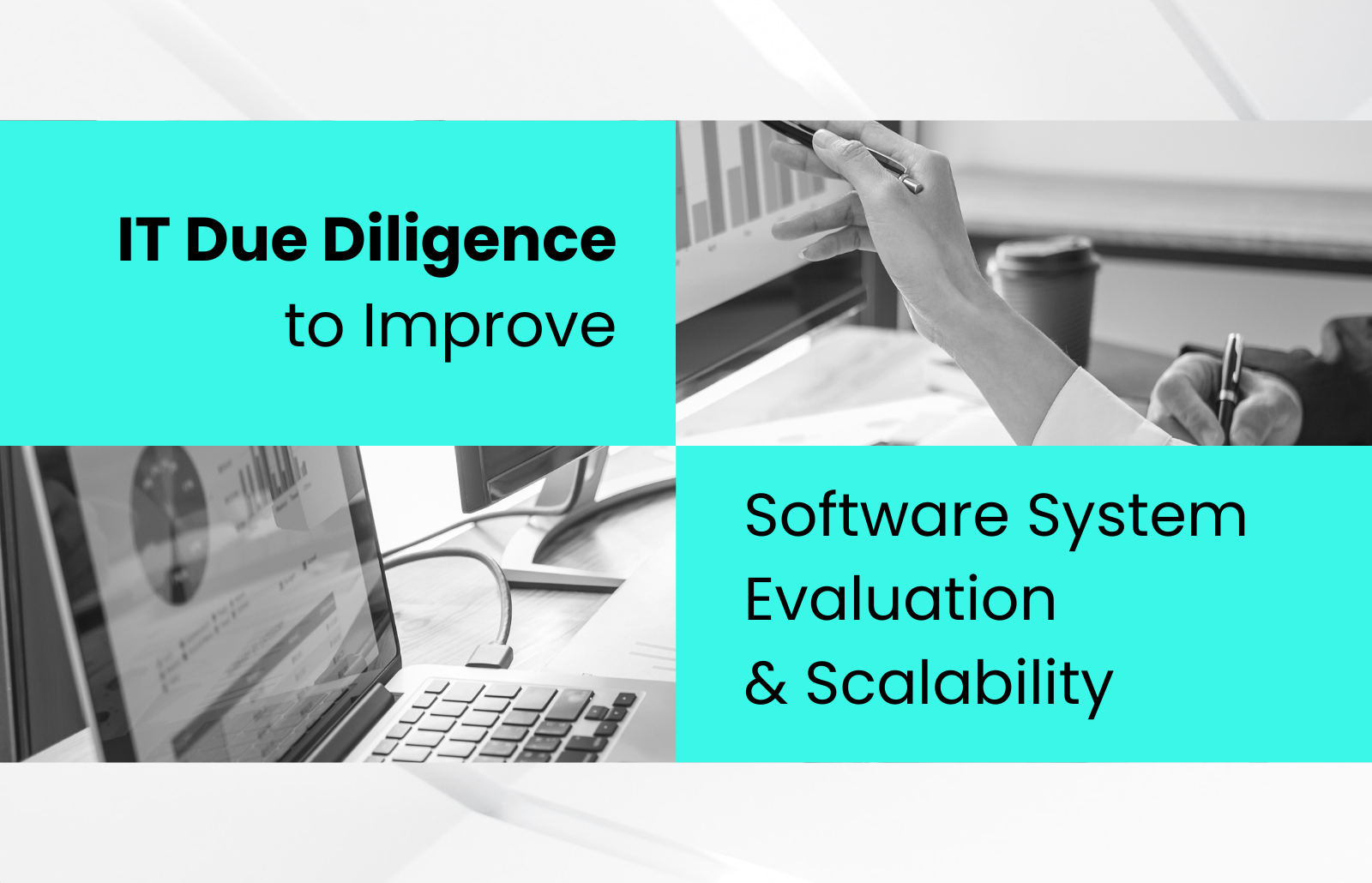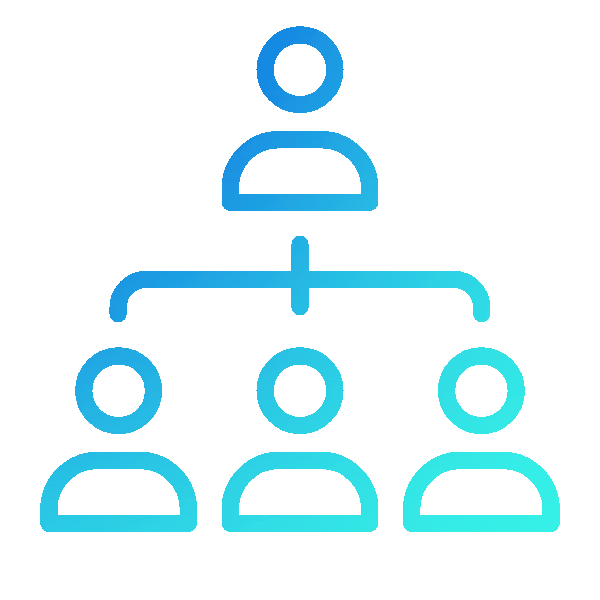In today’s digital age, software systems play a crucial role in the operations and success of businesses across various industries. Whether it’s managing internal processes, serving customers, or facilitating communication, the right software can significantly enhance efficiency and productivity. However, with the rapid pace of technological advancements and the complexity of modern software solutions, businesses need to conduct thorough due diligence before making any significant investment or strategic decision.
IT due diligence, particularly in the context of software systems, involves a comprehensive assessment of the technical aspects, capabilities, and risks associated with a particular software solution. Whether it’s evaluating a potential acquisition target, assessing a vendor’s software offering, or ensuring compliance with regulatory requirements, IT due diligence provides valuable insights that can inform decision-making and mitigate potential risks.
What Does the Process of IT Due Diligence Entail?
IT due diligence plays a critical role in evaluating software systems and mitigating risks associated with technology investments. By following a structured and systematic approach to IT due diligence, businesses can gain valuable insights into the technical aspects, capabilities, and risks of software solutions. It enables them to make informed decisions that align with their strategic objectives and optimise systems to enable more returns on investments.
Let’s break it down:
- Define Objectives and Scope
The first step in any due diligence process is to clearly define the objectives and scope of the evaluation. This involves identifying the specific goals you aim to achieve through the due diligence process, such as assessing the software’s functionality, scalability, security, and compliance. Additionally, determining the scope helps focus the evaluation on key areas of importance and ensures that all relevant aspects are adequately covered.
- Gather Information
Once the objectives and scope are established, the next step is to gather relevant information about the software system under evaluation. This includes documentation such as technical specifications, architecture diagrams, source code (if available), and any relevant legal or compliance documentation. Additionally, conducting interviews with key stakeholders, such as developers, architects, and system administrators, can provide valuable insights into the software’s design, development process, and operational considerations.
- Technical Assessment
The heart of IT due diligence involves conducting a detailed technical assessment of the software system. This typically includes evaluating the software’s architecture, design patterns, coding standards, performance characteristics, and scalability. It’s essential to assess whether the software meets the required functional and non-functional requirements and identify any potential limitations or areas for improvement.
- Security Evaluation
In today’s cybersecurity landscape, ensuring the security of software systems is paramount. As part of IT due diligence, a thorough security evaluation should be conducted to identify any vulnerabilities or weaknesses in the software’s architecture, implementation, or configuration. This may involve assessing the software’s adherence to industry best practices and standards, such as OWASP for web applications or CIS benchmarks for infrastructure components, and performing penetration testing or code reviews to uncover potential security flaws.
- Risk Analysis
Based on the findings of the technical assessment and security evaluation, a comprehensive risk analysis should be conducted to identify and prioritise potential risks associated with the software system. This includes assessing the impact and likelihood of various risks, such as technical debt, scalability issues, security vulnerabilities, and compliance gaps, and developing mitigation strategies to address them effectively.
- Documentation and Reporting
Finally, the results of the IT due diligence process should be documented and presented in a clear and concise manner. This typically involves preparing a detailed report that summarises the findings, identifies key risks and recommendations, and provides actionable insights to support decision-making. Additionally, documenting the due diligence process ensures transparency and accountability and serves as a valuable reference for future evaluations or audits.
Key Components of Technical Assessment
When conducting IT due diligence on software systems, several key aspects are typically checked to ensure a comprehensive evaluation or assessment. These include:
I) Architecture
The architecture of a software system serves as its foundational framework, dictating how various components interact and function together. It encompasses both the high-level structure and the underlying mechanisms that facilitate communication, data flow, and functionality. When conducting IT due diligence, a thorough understanding of the system’s architecture is essential for assessing its modularity, and agility, as well as its potential for scalability & future growth.
a) Monolithic vs. Microservices
- A monolithic architecture comprises a single, unified codebase where all components are tightly coupled and deployed as a single unit.
- Scalability: Monolithic systems may face challenges in scaling efficiently, as all components are interconnected.
- Maintenance: Modifications or updates to specific features often require changes across the entire codebase, making maintenance complex.
- In contrast, microservices architecture decomposes the system into small, loosely coupled services, each responsible for a specific function.
- Scalability: Microservices offer greater scalability, as individual services can be scaled independently based on demand.
- Maintenance: Updates and modifications are more granular, allowing for easier maintenance and deployment of changes.
b) Cloud vs. On-Premise
Determining whether the system utilises cloud technologies optimally or remains on-premise is crucial for understanding its scalability, flexibility, and cost-effectiveness.
- Adaptability: Cloud solutions offer elastic adaptability, allowing resources to be provisioned dynamically based on demand.
- Flexibility: Cloud environments provide flexibility in terms of resource allocation, enabling rapid deployment and scaling of services.
- Cost-effectiveness: Cloud solutions often offer a pay-as-you-go model, minimising upfront infrastructure costs and providing cost savings over time.
c) Communication Between Components
Seamless communication between system components is vital for ensuring efficient data exchange and functionality.
- Interoperability: Components should communicate effectively, utilising standard protocols and interfaces to ensure compatibility.
- Expandability: Evaluating how well components interact and scale to meet evolving demands helps identify potential bottlenecks and performance issues.
- Performance: Efficient communication is essential for maintaining optimal system performance under varying loads and conditions.
II) Technology Stack
The technology stack employed by a system significantly impacts its longevity, maintainability, and overall performance. Conducting a detailed examination of the technology stack is essential for modernisation efforts, interoperability, and for assessing potential risks:
- Maturity and Support Status: Evaluating the maturity and support status of these technologies is crucial for assessing their long-term viability. Utilising outdated or unsupported frameworks and databases can expose the system to security vulnerabilities and limit community support.
- Interoperability: Assessing the tech stack as a whole and ensuring that everything works together to ensure you have an optimal tech stack.
- Future compatibility: An IT Due Diligence can not only help with identifying current tech stack problems but also with ensuring that they can support future business goals and support functionalities that the team may desire in the future.
In essence, conducting a thorough examination of version control practices, technology stack, security measures, and performance optimisation techniques is essential for evaluating the robustness, security, and performance of a software system. This comprehensive approach ensures that potential risks and opportunities are thoroughly analysed, laying the groundwork for informed decision-making and successful system implementation.
III) Code Review
A meticulous examination of the codebase is essential for evaluating its quality, maintainability, and adherence to best practices. Code review involves analysing the organisation, structure, and readability of the code, as well as identifying potential issues or areas for improvement.
a) Adherence to Coding Standards
Adhering to established coding standards and best practices such as Clean Code or SOLID principles, among many others, promotes maintainability, readability, and robustness.
- Maintainability: Well-structured code that follows coding standards is easier to understand, update, and maintain over time. At Zartis, we deliver a thorough analysis of the code base to identify areas of improvement.
- Readability: Clean, well-documented code enhances comprehensibility and facilitates collaboration among developers. With IT due diligence services, you can ensure your code is concise, understandable and transferable.
- Robustness: We analyse the current state, and advise clients on how to follow best practices that promote modular, loosely coupled code, reducing the risk of errors and improving code quality.
b) Identification of Code Smells
Code smells are indicators of potential issues or areas of improvement within the codebase. Common code smells include tight coupling, duplicated code, and the presence of magic numbers.
- Tight Coupling: Tight coupling between components can hinder flexibility and maintainability, making the system more prone to errors.
- Duplicated Code: Duplication of code increases the risk of inconsistencies and makes maintenance more challenging.
- Magic Numbers: Hard-coded values, or “magic numbers,” should be avoided as they can lead to code that is difficult to understand and maintain.
IV) Testing
Testing is a critical aspect of software development, ensuring that the codebase is reliable, functional, and free of defects. An IT Due Diligence can help you optimise your current testing efforts, or identify missed opportunities to implement tests across your whole SDLC.
Thorough testing procedures encompass various types of tests, including unit tests, integration tests, and end-to-end tests, each serving a specific purpose in validating different aspects of system behaviour.
- Unit Tests: Test individual components or units of code in isolation to verify their correctness and behaviour.
- Integration Tests: Test the interactions between different components to ensure they work together as expected.
- End-to-End Tests: Test the entire system from end to end to validate its functionality and behaviour from the user’s perspective. Let’s explore deeper!
a) Types of Testing
1. Functional Testing
Functional testing involves verifying that the software operates according to its specified requirements. This type of testing ensures that all features and functionalities work as intended. Key aspects include:
- Unit Testing: Testing individual components or modules of the software to ensure they function correctly.
- Integration Testing: Ensuring that different modules or services work together as expected.
- System Testing: Testing the complete and integrated software system to verify that it meets the specified requirements.
2. Acceptance Testing
Acceptance testing is conducted to determine whether the software system meets the business requirements and is ready for deployment. It is often performed by end-users or clients to validate that the system performs as expected in real-world scenarios. Types of acceptance testing include:
- User Acceptance Testing (UAT): End-users test the software to ensure it can handle required tasks in real-world situations, according to specifications.
- Operational Acceptance Testing (OAT): Testing the software in its operational environment to ensure it is ready for deployment and operational tasks.
3. Performance Testing
Performance testing assesses the speed, responsiveness, and stability of a software system under a particular workload. Ensuring optimal system performance is essential for delivering a seamless user experience and maintaining user satisfaction. This type of testing is crucial for identifying performance bottlenecks and ensuring that the system can handle high traffic and data processing demands. Key types include:
- Load Testing: Evaluating how the software performs under expected load conditions.
- Stress Testing: Determining the software’s behaviour under extreme conditions, beyond normal operational capacity.
- Scalability Testing: Assessing the software’s ability to scale up or down in response to increased or decreased load.
- Scalability Measures: Assessing scalability measures implemented within the system architecture, such as horizontal and vertical scaling, helps ensure that the system can handle anticipated loads without experiencing performance degradation.
4. Smoke Testing
Smoke testing, also known as “sanity testing,” is a preliminary test to check the basic functionality of the software. It ensures that the most crucial functions of the software work correctly, without delving into finer details. This type of testing is typically performed after a new build or version is released to catch any major issues early.
5. Security Testing
Security testing aims to identify vulnerabilities and ensure that the software system is protected against threats and attacks. Assessing the security practices implemented within the system is crucial for identifying vulnerabilities and ensuring robust protection mechanisms. It includes:
- Penetration Testing: Simulating attacks to identify security weaknesses.
- Vulnerability Scanning: Automated scanning to detect potential vulnerabilities.
- Security Audits: Comprehensive review of the software’s security mechanisms and policies.
- Secure Coding Practices: Implementing secure coding practices, such as input validation, output encoding, and proper error handling, helps mitigate common security vulnerabilities, such as injection attacks and cross-site scripting (XSS).
V) Optimising CI/CD through Due Diligence Analysis
Continuous Integration and Continuous Deployment (CI/CD) are critical processes in modern software development, ensuring that code changes are automatically tested and deployed. To fully leverage the benefits of CI/CD, a thorough due diligence analysis can be instrumental. This process involves a detailed examination of the current CI/CD practices to identify areas for improvement and provide a structured roadmap for optimization. Here’s how due diligence can enhance CI/CD:
-
Status Check:
-
-
- Assessment of Current Practices: Conduct a comprehensive review of existing CI/CD pipelines, tools, and workflows. This includes analysing the integration of code repositories, build automation, testing frameworks, and deployment processes.
- Performance Metrics: Evaluate key performance indicators (KPIs) such as build success rates, deployment frequency, lead time for changes, and mean time to recovery (MTTR) to understand the effectiveness and efficiency of current CI/CD practices.
- Compliance and Security: Ensure that the CI/CD processes adhere to industry standards and security protocols, identifying any gaps that could pose risks.
-
-
Optimisation Advice:
-
-
- Toolchain Enhancements: Recommend the best-in-class tools that align with the team’s needs and the project’s requirements. This might involve switching to more robust CI/CD platforms or integrating additional tools for better automation and monitoring.
- Process Improvement: Suggest refinements to the existing workflows to eliminate bottlenecks, reduce manual interventions, and streamline the development-to-deployment pipeline. This could include implementing more sophisticated testing strategies or refining branching models.
- Scalability and Flexibility: Provide guidance on how to scale the CI/CD pipelines to handle increasing loads and more complex deployments, ensuring that the infrastructure can grow with the project’s demands.
-
-
Roadmap for Optimisation:
-
-
- Phased Implementation Plan: Develop a detailed roadmap outlining the steps to enhance the CI/CD processes. This should be broken down into short-term, mid-term, and long-term goals to ensure gradual and manageable improvements.
- Training and Skill Development: Identify any skill gaps within the team and recommend training programs or workshops to equip the team with the necessary knowledge to maintain and evolve the CI/CD pipelines effectively.
- Continuous Improvement: Establish a culture of continuous improvement by setting up regular reviews and feedback loops. This ensures that the CI/CD processes are continually refined based on performance data and evolving project needs.
-
By conducting a thorough due diligence analysis, teams can gain valuable insights into their current CI/CD practices and receive expert recommendations on how to optimise their processes. This not only enhances efficiency and reliability but also positions the development team to better meet future challenges and deliver high-quality software at a faster pace.
Crucial Role of Industry-Specific Expertise in IT Due Diligence
In the realm of IT due diligence, possessing industry-specific expertise is not merely advantageous – it’s indispensable. As businesses increasingly rely on software systems to drive their operations and achieve strategic objectives, understanding the nuances and intricacies of a particular industry becomes paramount when evaluating the technical aspects, capabilities, and risks associated with software solutions. Let’s delve into why industry-specific expertise is essential in conducting thorough and effective IT due diligence:
1- Understanding Unique Requirements:
a) Compliance with Industry-Specific Regulations and Standards
- Healthcare: HIPAA regulations for patient data privacy and security.
- Financial: Compliance standards such as PCI DSS and Sarbanes-Oxley.
b) Specific Needs Assessment
- Healthcare: Evaluating software’s ability to facilitate secure electronic health record (EHR) management and interoperability.
- Financial: Assessing software’s capacity to support secure online transactions and robust audit trails for financial data integrity.
2- Recognising Industry-Specific Challenges:
a) Manufacturing
- Supply Chain Integration: Assessing software’s capability to seamlessly integrate with diverse supply chain processes, including procurement, production, and distribution.
- Real-time Inventory Management: Evaluating software’s ability to track inventory levels in real-time and optimise inventory turnover rates to minimise stock outages and overstock situations.
b) Hospitality
- Customer Experience Enhancement: Assessing software features for personalised guest services, loyalty program management, and feedback analysis to enhance overall customer satisfaction.
- Reservation Management Streamlining: Evaluating software efficiency in managing room bookings, event reservations, and resource allocations to optimise occupancy rates and revenue generation.
3- Assessing Fit-for-Purpose:
a) Alignment with Industry-Specific Workflows:
- Healthcare: Evaluating whether the software accommodates clinical workflows, patient scheduling, and electronic health record (EHR) documentation requirements.
- Retail: Assessing the software’s capability to handle inventory management, point-of-sale transactions, and customer relationship management (CRM) functionalities.
b) Support for Specialised Functionalities or Integrations
- Manufacturing: Verifying the software’s ability to integrate with industrial automation systems, machine sensors, and enterprise resource planning (ERP) software for seamless production control.
- Legal: Assessing the software’s support for legal document management, case management, and compliance tracking functionalities specific to the legal industry.
c) Versatility and Adaptability
- Technology: Evaluating the software’s scalability to handle increasing user loads, data volumes, and transaction throughput, as well as its flexibility to adapt to evolving industry standards and regulations.
4- Navigating Complex Ecosystems
a) Understanding Industry Dynamics and Relationships:
- Healthcare: Recognising the interconnectedness of healthcare providers, insurance companies, pharmaceutical manufacturers, and regulatory bodies in the healthcare ecosystem.
- Transportation: Understanding the relationships between shippers, carriers, freight forwarders, and regulatory agencies within the transportation and logistics industry.
b) Identifying Integration Challenges and Dependencies
- Retail: Identifying potential integration challenges between e-commerce platforms, inventory management systems, and customer relationship management (CRM) software.
- Energy: Assessing dependencies on energy trading platforms, grid management systems, and regulatory compliance frameworks within the energy sector.
c) Assessing the Impact of Industry-Specific Factors
- Hospitality: Understanding the impact of seasonal fluctuations, tourism trends, and regulatory changes on hospitality businesses and their software needs.
- Education: Recognising the influence of funding models, accreditation requirements, and student enrollment trends on educational institutions’ software procurement decisions.
5- Mitigating Industry-Specific Risks:
a) Cybersecurity Threats and Vulnerabilities
- Banking: Identifying risks associated with online banking platforms, payment processing systems, and mobile banking applications, and implementing robust security measures to safeguard against cyber threats.
- Government: Assessing the risk of data breaches, ransomware attacks, and unauthorised access to sensitive government information systems, and implementing stringent security controls and protocols.
b) Regulatory Compliance Challenges
- Pharmaceutical: Ensuring compliance with FDA regulations for drug development, clinical trials, and manufacturing processes, and implementing measures to maintain data integrity and traceability throughout the product life cycle.
- Legal: Addressing compliance requirements related to client confidentiality, data privacy regulations, and ethical standards governing legal practice, and implementing secure document management and communication protocols.
Final Verdict
In today’s rapidly evolving tech landscape, IT Due Diligence emerges as a critical process in software systems evaluation and optimisation. It serves as a compass, guiding businesses through the complexities of technology investments, regulatory compliance, and risk management. By conducting thorough assessments, companies can mitigate risks, uncover opportunities, and make informed decisions that align with their strategic objectives. Embracing IT Due Diligence isn’t just a best practice; it’s a strategic imperative for businesses navigating the digital age.
Embracing Zartis: Why Zartis Might Be Your Preferred Choice
Zartis is an innovative company that specialises in software consulting and development, as well as on-demand workforce solutions through dedicated software development teams. Here are some reasons why Zartis might be a preferred choice:
- Expert Team Members: Zartis’ IT Due Diligence service is supported by experienced professionals. Our senior technical staff has years of hands-on experience to ensure your due diligence is done thoroughly. We understand IT systems and technologies, so we can spot risks and opportunities.
- Industry and Domain Experts: Industry and domain experts on our team have completed over 100 projects. Our broad sector knowledge allows us to tailor our due diligence approach to your industry’s needs and challenges. Our expertise allows us to provide comprehensive assessments that inform healthcare, finance, and manufacturing decisions.
- ISO 27001 Certified: Security and reliability are crucial in the digital age. Zartis insists on top security and compliance. ISO 27001 certification confirms our strong information security management systems. We will handle your IT due diligence with confidentiality, integrity, and professionalism because security is in our DNA. Our ISO 27001 compliance protects your sensitive data and proprietary information during due diligence, giving you peace of mind and confidence in our services.
- Global Reach: With offices in key tech hubs around the world, including Ireland, Spain, and the United States, Zartis has a global presence and can support companies with their recruitment needs on a local, regional, or international scale.
- Commitment to Client Success: Zartis is dedicated to building long-term partnerships with its clients and is committed to their success. They take the time to understand each client’s unique requirements, culture, and business goals, ensuring they find the right talent fit for their organisation.
Overall, Zartis stands out as a trusted partner for companies seeking a comprehensive and honest IT Due Diligence Analysis Services to drive their business forward in today’s competitive market. Whether you’re looking to scale your team, access specialised skills, or streamline your recruitment process, at Zartis we have the expertise and resources to help you succeed.
Get in touch with us today to learn more about how we can support your due diligence needs and take your business to the next level!





